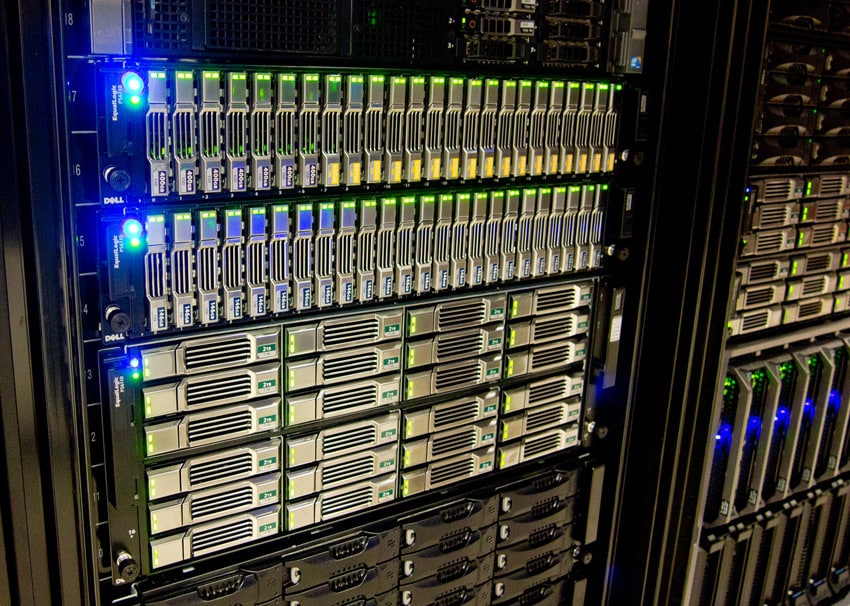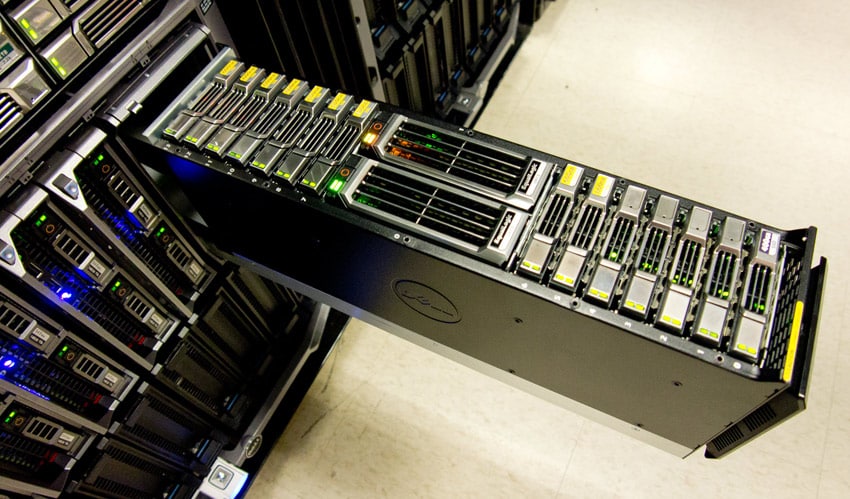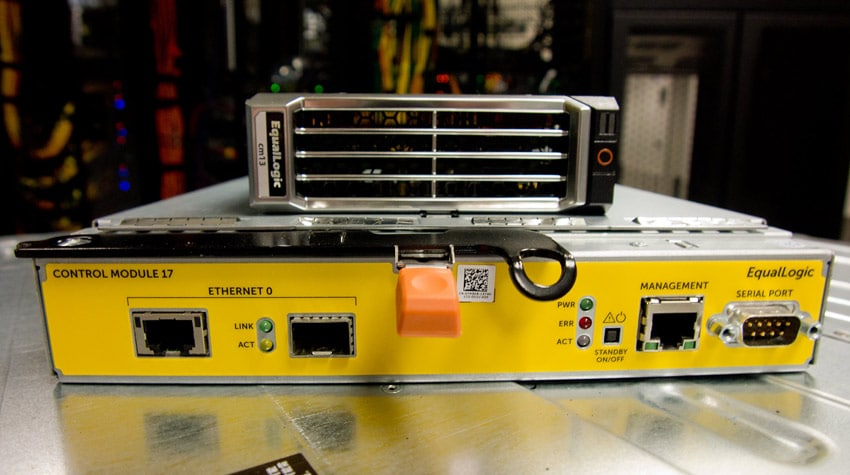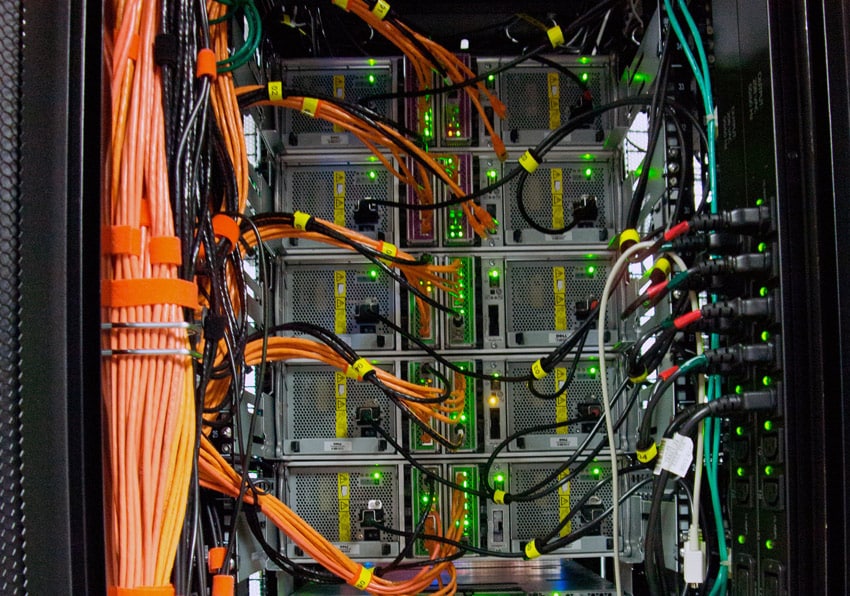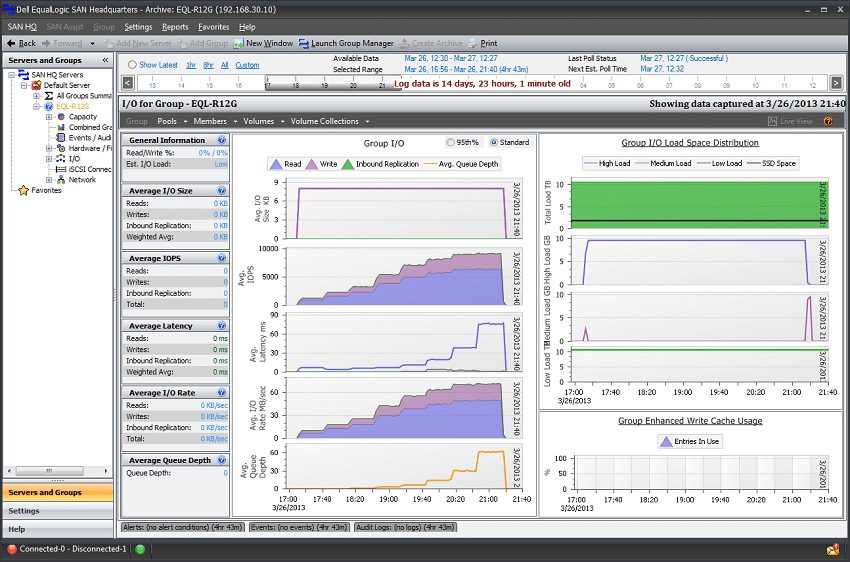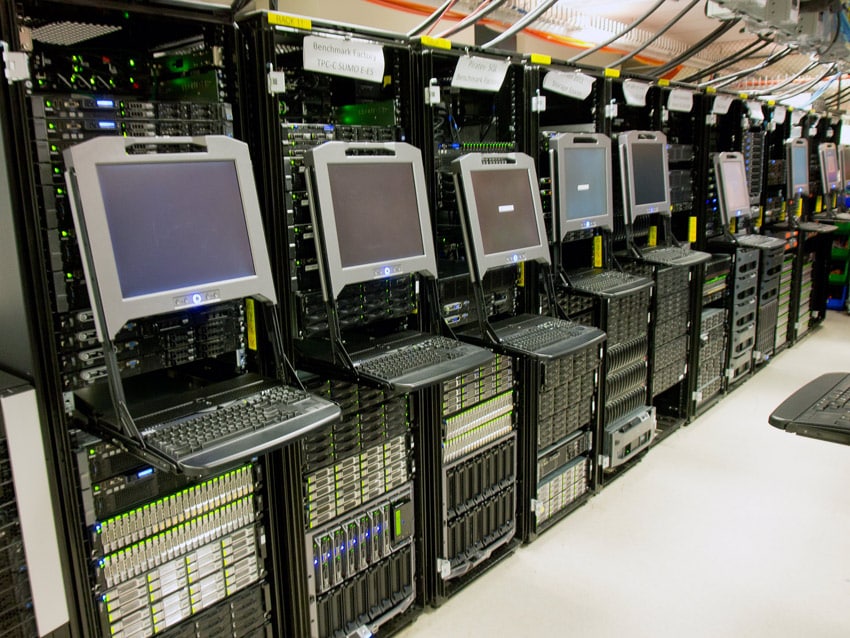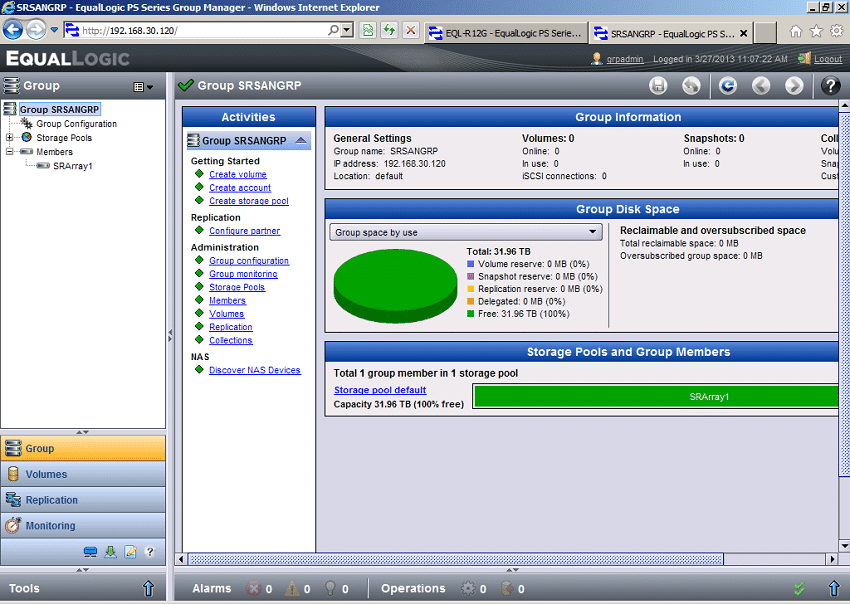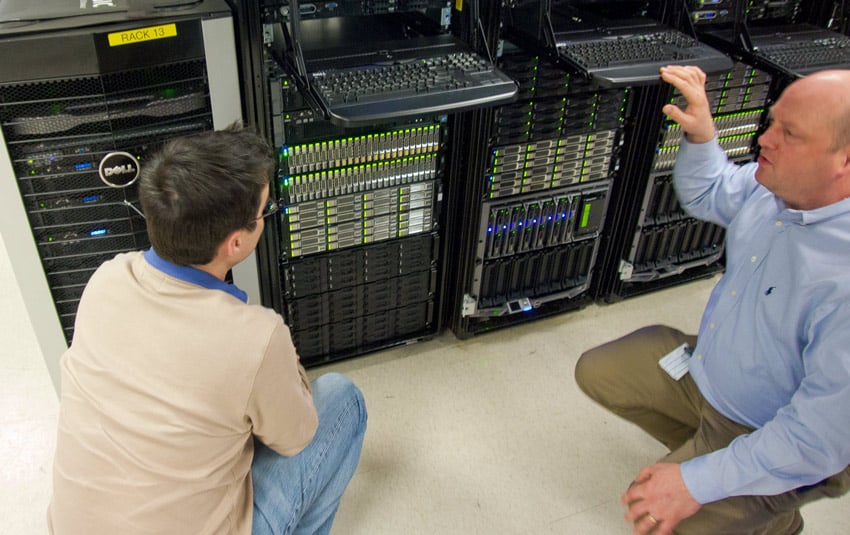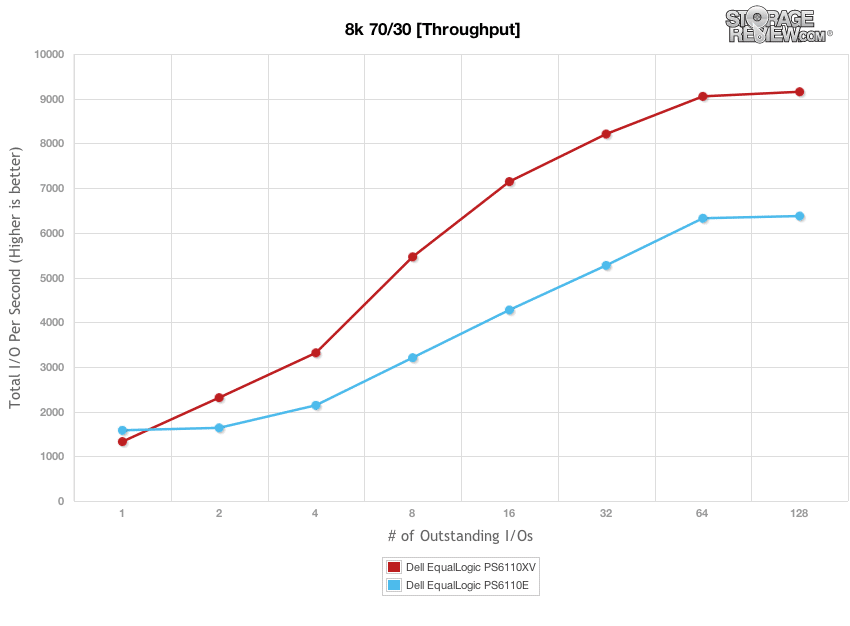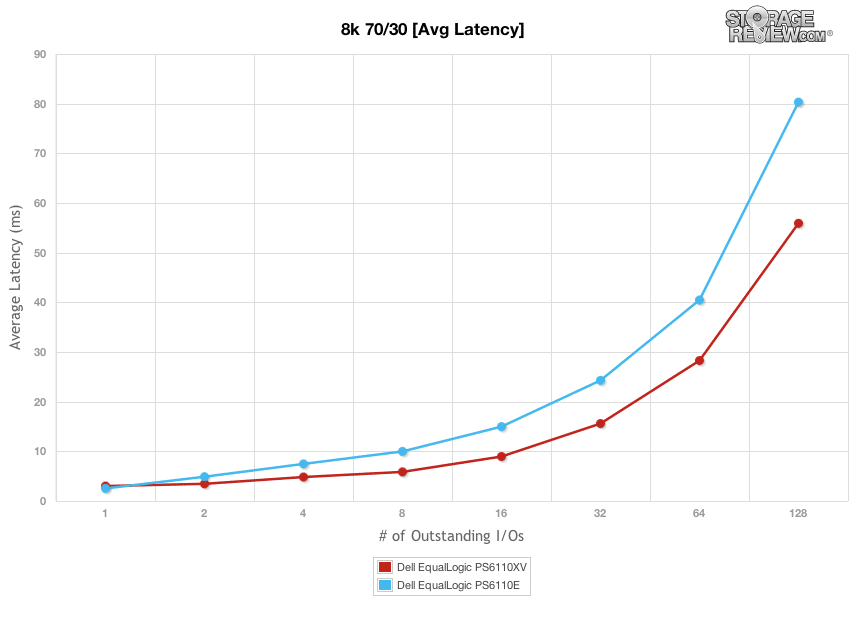
We recently spent a few days at the Dell EqualLogic headquarters in Nashua, NH to experience a deep dive on the EqualLogic family, management software and performance capabilities of the arrays. The EqualLogic full-immersion treatment was to prepare us for the latest generation EqualLogic PS6110 array to hit our lab for full review in the coming weeks. We split time between detailed briefings on features like Linux management and VMware integration and several hours of in-lab time working hands on with the entire PS (peer storage) family ranging from the entry-level PS4110 to the full-on PS6110 hybrid array that combines flash storage with 15K hard drives.
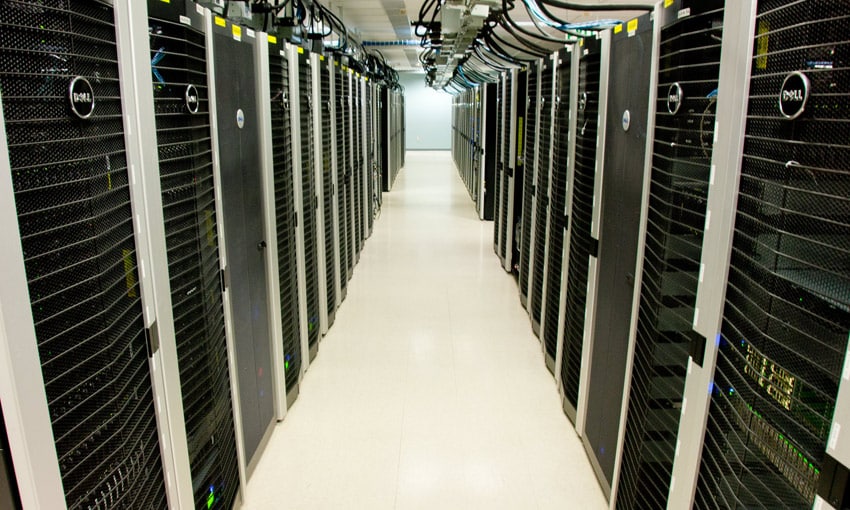
Hardware Overview
The Dell EqualLogic family has a variety of features including load balancing and data pooling, while offering unique drive configurations and dual controllers. To start, automatic load balancing migrates data to shift it evenly across all available storage platforms yielding greater overall system performance. Data is also pooled and tiered by the system to ensure that it can be accessed quickly and efficiently. Some systems offer standard 3.5" hard drives, while others can be fitted with 2.5" drives. There is an option to create a hybrid array that supports both HDD and SSDs in the same configuration.
Additionally, all of the arrays offer dual controllers, each with essentially the same layout with some variation in interconnect. They can provide connectivity via 10GbE BASE-T and SFP+ or quad 1GbE ports. It's also worth noting that on the PS-M4110 blade array, the engineers were able to build the exact same controllers, just with a micro size.
Perhaps one of the most exciting features available is scale-out. While many others in the space offer scale-up, essentially the ability to increase storage at-will, the Dell EqualLogic family offers users the ability to scale-out. Performance increases dramatically with added memory and controllers on top of the expanded capacity. This makes the upgrade process significantly easier and more cost-effective as users can put in new units and increase compute power without having to replace everything.
The EqualLogic family arrays are broken down into the following products:
- PS4110: Supports up to two systems per group and is the entry point for the PS family and comes in 2.5" or 3.5" configurations. PS4110 systems can also be integrated into larger groups that include PS6110 series arrays.
- PS-M4110 Blade Array: Specialized storage system designed for the Dell PowerEdge M1000e blade chassis. The PS-M4110 takes up two blade slots and provides 14 drives and maintains the dual controllers. Dell supports two groups of two PS-M4110 systems per blade chassis for a total of up to four storage arrays per chassis.
- PS6110: The workhorse of the EqualLogic family, the PS6110 series arrays can be configured several ways ranging from standard 2.5" and 3.5" hard drive arrays to the PS6110XS that is a hybrid of 10K hard drives and SSDs or the PS6110S which is entirely SSD-based.
- FS7600/FS7610: EqualLogic's powerhouses go beyond scaling-up which just adds storage capacity; the FS7600/FS7610 adds unified NAS capability.
Software Overview
The Dell EqualLogic family of products is supported by software with a full feature-set that goes beyond what most others in the space offer. The Dell EqualLogic family integrates with Microsoft, Linux and VMware applications and platforms. With VMware, it isn't just certified to be capable of working, it has actual integration that provides nearly the same functionality users would find accessing the machine directly. Management is also solid; the family offers automatic management of snapshots and replication. For support, one really unique feature is that SAN Headquarters can automatically transmit information to Dell EqualLogic.
Array Performance
While no substitute for a complete review and evaluation, we did manage to run a few IOmeter 8K 70/30 tests against a PS6110XV with 2.5" 15K HDDs and a PS6110E with 3.5" 7.2K Nearline SAS HDDs. We used on-site Dell PowerEdge R610 servers located in the same rack as the EqualLogic arrays we were testing, which we connected over 10GbE through a Dell Force10 S4810 10/40GbE switch. Shown below is one of the rows in the extensive EqualLogic datacenter we used to interface and test the platforms.
Our on-site testing process started with a complete rundown of the equipment we were going to test, which in this case was an EqualLogic PS6110XV and PS6110E. These were wiped and brought to a factory-fresh state, where we discovered them on the network, configured the array for testing, and provisioned LUNs that were attached to the servers we would use as load generators.
While it sounds like a lot of work, the Dell EqualLogic developers pride themselves in making the systems easy to setup, which in our case took no more than 10-15 minutes start to finish with no background experience working with these arrays.
To kick the spindles, so to speak, we used IOMeter that was already present on the test servers and created a basic 8K 70/30 profile, with fully random activity and 4K alignment. From there we set the script to measure the performance from QD1 to QD128 in increments. Both EqualLogic arrays performed quite well in our initial hands-on, with performance of the PS6110XV using 10K SAS HDDs scaling from 1,300 IOPS to 9,200 IOPS and the PS6110E using 7.2K SAS HDDs scaling from 1,600 IOPS to 6,400 IOPS.
Drilling into average latency with our 8K 70/30 workload you can start to see where the performance sweet spot for each array is. If you use 20ms as your cutoff for acceptable latency, the PS6110XV was able to maintain an I/O speed of 8,200 IOPS with an average latency of 15.6ms at QD32. The PS6110E with slower spindle drives had its sweet spot at QD16, with an I/O speed of 4,300 with an average latency of 15ms.
Conclusion
The full Dell EqualLogic immersion is instructive for a few reasons. First, it helps put claims of competing companies into focus, especially startups who make a living off attacking the large storage vendors. There's a significant difference to many enterprise buyers between a complete VMware integration, where most of the EqualLogic management tools are pulled into vCenter, compared to being VMware certified, which essentially means you're able to present a LUN to VMware. Second, there's a wide discrepancy in terms of service and support. Dell offers 4-hour in-person service windows, something smaller storage vendors can't offer. Lastly, while much noise has been made from startups and large storage vendors alike around flash arrays, the EqualLogic PS line can be completely configured with flash should a customer desire that, although Dell finds most EqualLogic customers prefer the intelligence of auto tiering across several different types of storage.
It is worth noting however than when it comes to pure dollar per gigabyte analysis, Dell EqualLogic expects to lose many of those battles to NAS and JBOD solutions, in addition to startups that provide solutions that are more about capacity than a completely integrated solution. Of course Dell has other products to help wage combat in those markets, that's not the focus here. EqualLogic is about being very simple to deploy and use, while providing class-leading scalability and integration with applications to extend the functionality of EqualLogic arrays. Dell has also indicated that users of their peer-scaling model and all-inclusive licensing lower their TCO by keeping their arrays active for several years instead of needing to consistently invest in updates as they would with other vendors. We will put such features and performance to the test in the coming weeks as we embark on the first independent review of the latest generation PS6110 EqualLogic array.
UPDATE – 10/28/13 – EqualLogic PS6110XS Review Posted

